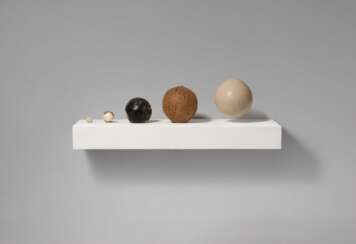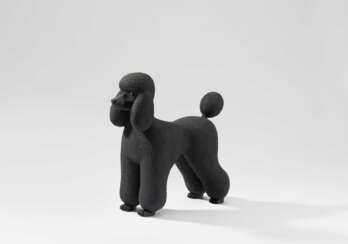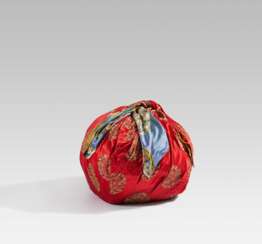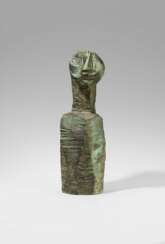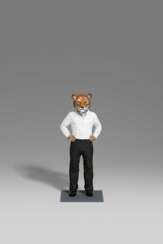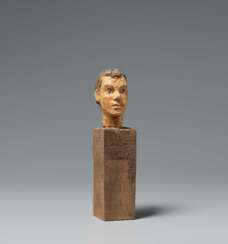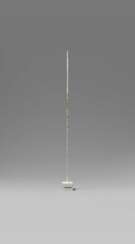
Contemporary Sculptures — A500_2: Modern, Post War & Contemporary
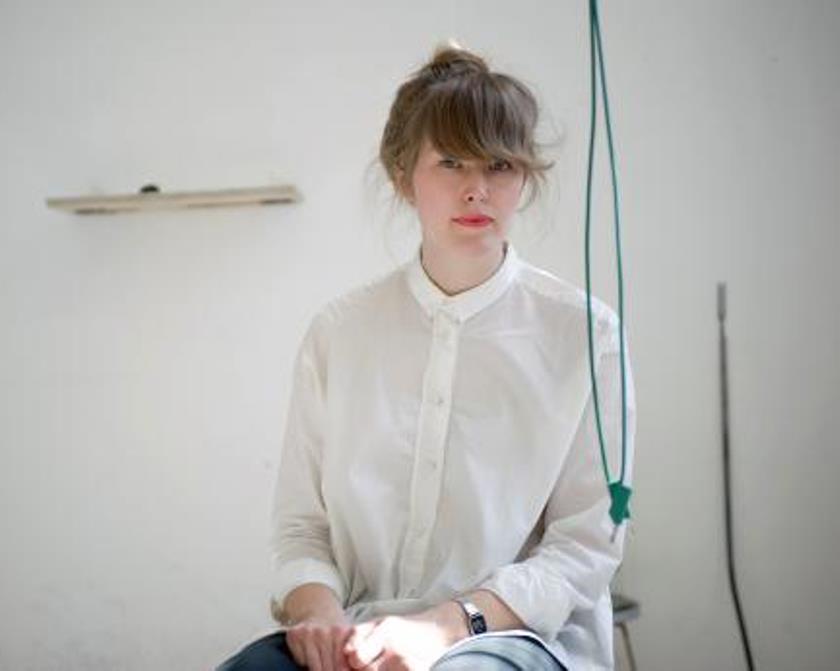
Nina Canell is a Swiss and German artist-sculptor and installer.
She was educated at the Dun Laoghaire Institute of Art, Design and Technology in Dublin, Ireland and lives and works in Berlin, Germany.
Nina Kanell creates sculptures and installations, preferring to work with ordinary objects such as old beams and pipes, cables and seeds, nails and glass jars. She performs physical or chemical experiments on them, transforms them into something new and explores their hidden potential.
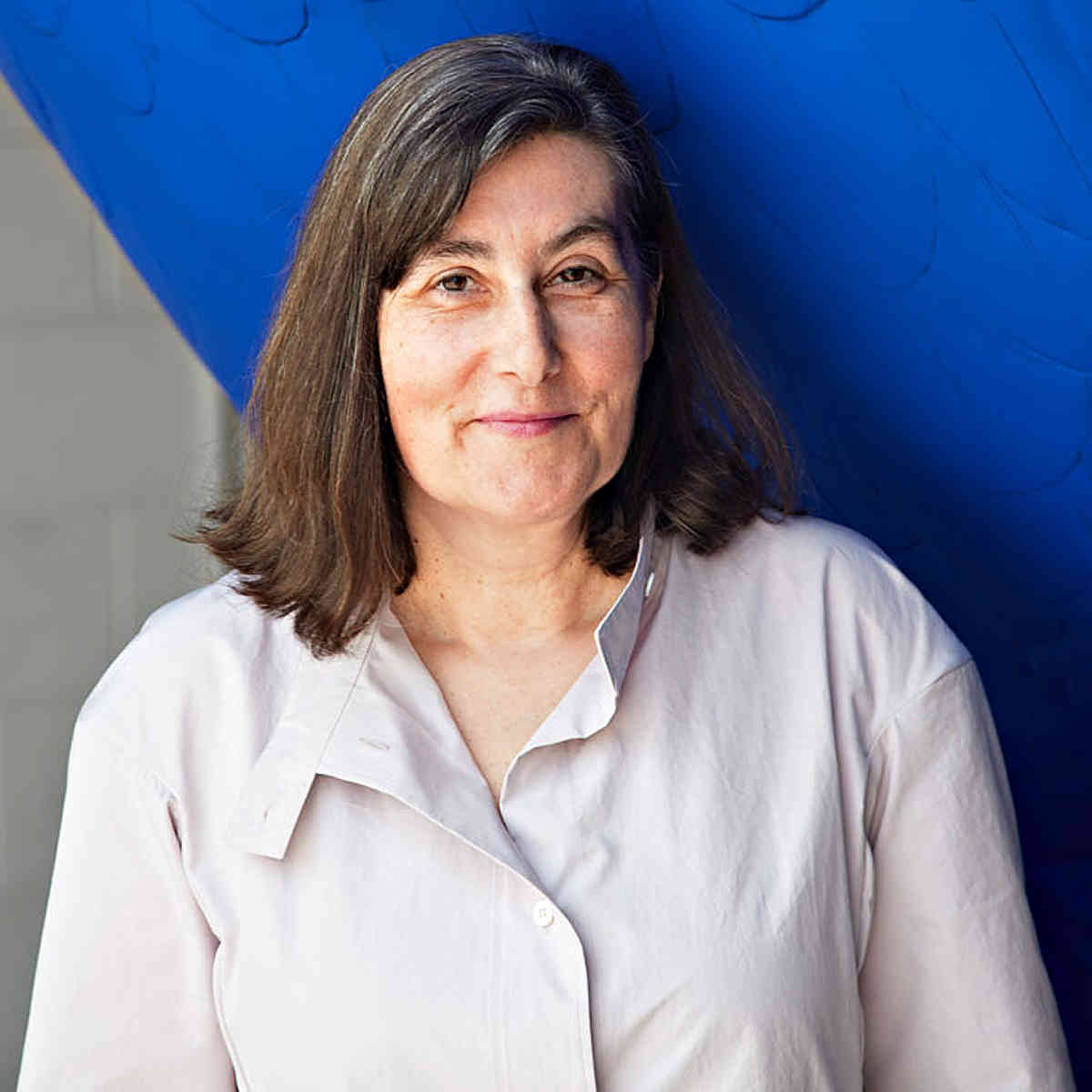
Katharina Fritsch is a German sculptor who lives and works in Düsseldorf, Germany.
She studied at the Düsseldorf Academy of Art and became known for her iconic and unusual sculptures and installations.
Fritsch's work often evokes disturbing religious or quasi-spiritual associations and is deeply psychological, as if she were trying to give an image to our deepest fears, extracted from the world of myth, religion, cultural history and everyday life. One of her most impressive works, Rat King (1993), is a circle of sixteen giant rats, each nearly ten feet tall, with their tails tied in a massive knot in the center.
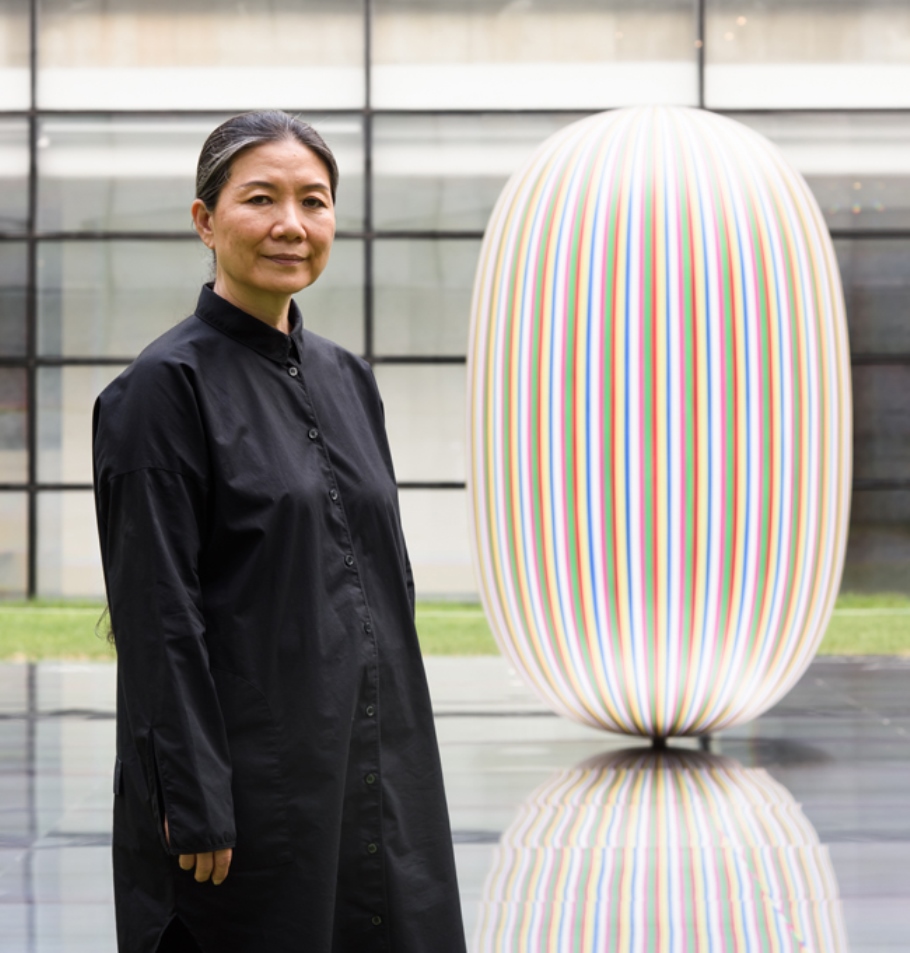
Kimsooja, real name Kim Soo-ja, is a South Korean and American media artist living and working in New York and Seoul.
After studying art in Seoul, Kimsooja studied lithography at the École Nationale Supérieure des Beaux-Arts in Paris, then apprenticed at the New York Museum of Modern Art.
Her early works used fabric, which quickly became her favorite medium: the artist began creating large textile collages. In her work, Kimsooja combines performance, film, photography and installation with the use of textiles, light and sound. The artist explores issues relating to the human condition, as well as addressing issues of aesthetics, culture, politics and the environment.
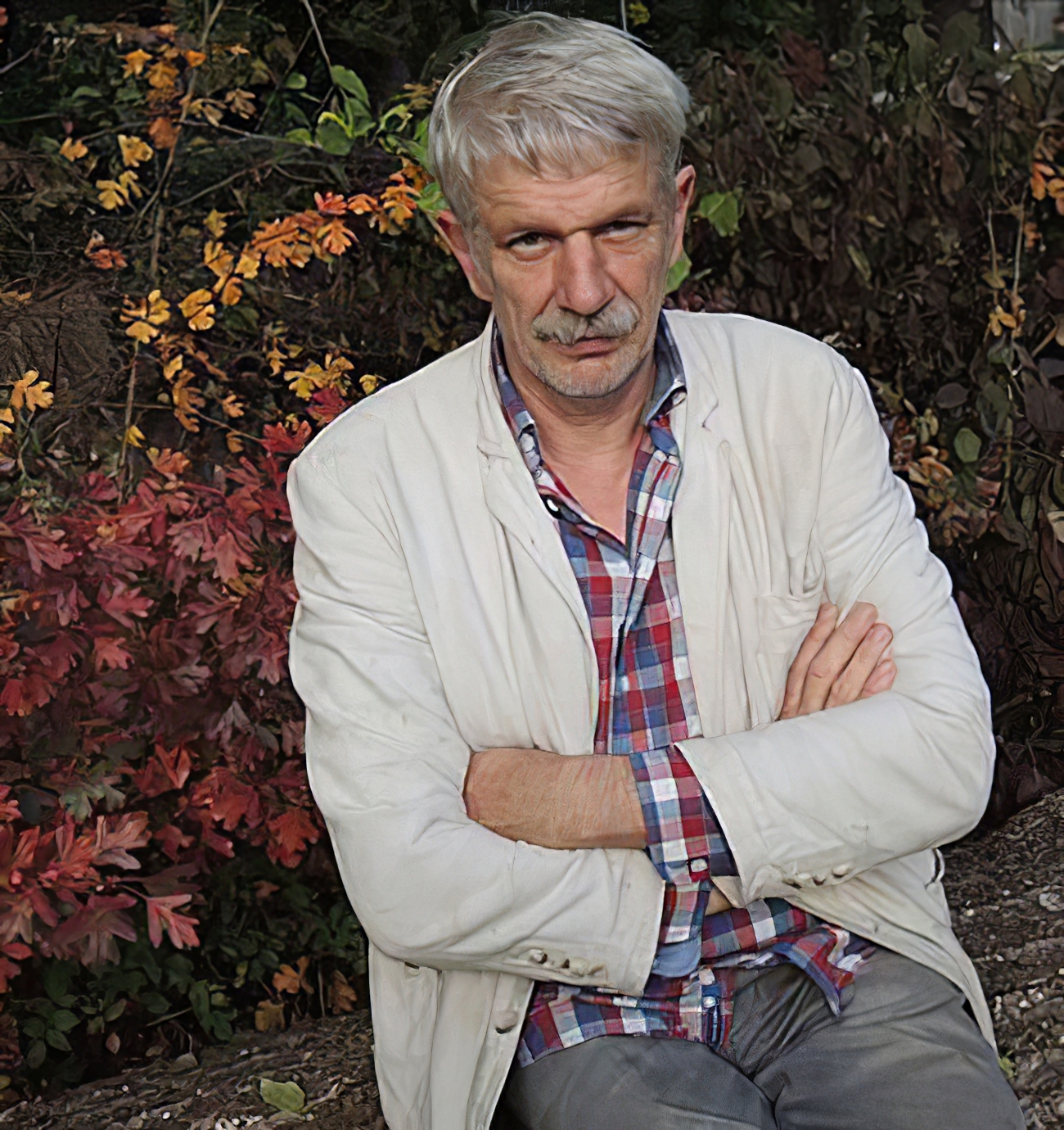
Dietrich Klinge is a German painter and sculptor.
He studied freehand drawing and sculpture at the Stuttgart State Academy of Fine Arts.
Dietrich Klinge became world famous primarily for his uniquely sculpted human figures. With his abstract-shaped forms he creates a peculiar pictorial world of solid figures, busts, heads and reliefs, the powerful presence of which derives from their existential expressiveness. Klinge brings to life, with great artistic originality, the timeless feelings and contradictory mental states of man.
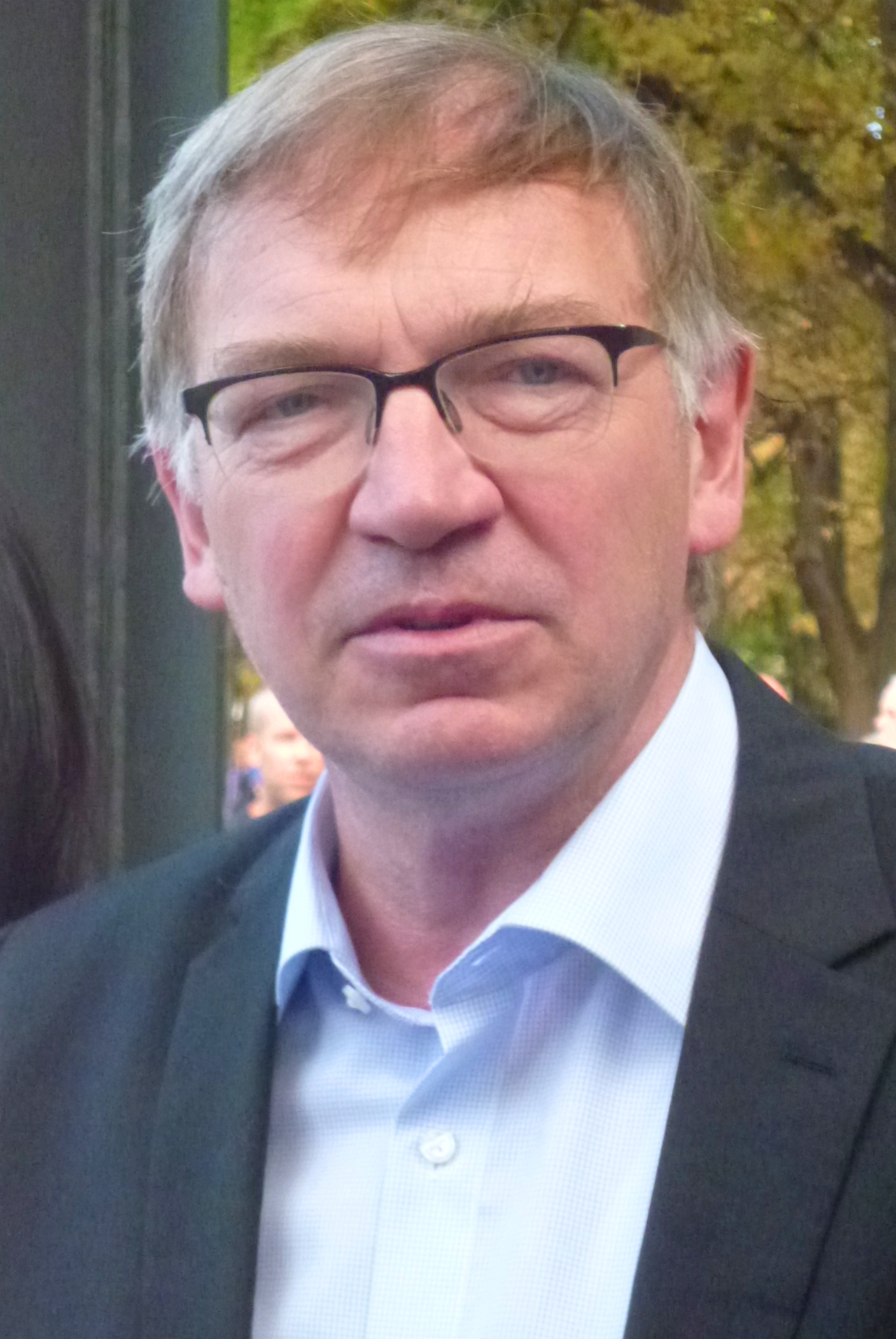
Stephan Balkenhol is a German artist known for his sculptures capturing the human form. Based in France and Germany, he specializes in wood sculptures, reliefs, drawings, and graphic techniques like lithography, woodcuts, and stencils. His distinct style features roughly carved and vibrantly painted wooden sculptures, often depicting people, animals, and architecture.
Balkenhol's subjects lack emotions, often gazing into emptiness, resulting in a distant and enigmatic aura. Wood is his primary medium, with softer woods allowing precise facial details while maintaining imperfections like chips, knots, and tool marks. The artist adds paint as a finishing touch, accentuating anatomy and vitality. The textured surfaces beneath the paint layer amplify the sense of life in Balkenhol's works.

Stephan Balkenhol is a German artist known for his sculptures capturing the human form. Based in France and Germany, he specializes in wood sculptures, reliefs, drawings, and graphic techniques like lithography, woodcuts, and stencils. His distinct style features roughly carved and vibrantly painted wooden sculptures, often depicting people, animals, and architecture.
Balkenhol's subjects lack emotions, often gazing into emptiness, resulting in a distant and enigmatic aura. Wood is his primary medium, with softer woods allowing precise facial details while maintaining imperfections like chips, knots, and tool marks. The artist adds paint as a finishing touch, accentuating anatomy and vitality. The textured surfaces beneath the paint layer amplify the sense of life in Balkenhol's works.

Stephan Balkenhol is a German artist known for his sculptures capturing the human form. Based in France and Germany, he specializes in wood sculptures, reliefs, drawings, and graphic techniques like lithography, woodcuts, and stencils. His distinct style features roughly carved and vibrantly painted wooden sculptures, often depicting people, animals, and architecture.
Balkenhol's subjects lack emotions, often gazing into emptiness, resulting in a distant and enigmatic aura. Wood is his primary medium, with softer woods allowing precise facial details while maintaining imperfections like chips, knots, and tool marks. The artist adds paint as a finishing touch, accentuating anatomy and vitality. The textured surfaces beneath the paint layer amplify the sense of life in Balkenhol's works.

Stephan Balkenhol is a German artist known for his sculptures capturing the human form. Based in France and Germany, he specializes in wood sculptures, reliefs, drawings, and graphic techniques like lithography, woodcuts, and stencils. His distinct style features roughly carved and vibrantly painted wooden sculptures, often depicting people, animals, and architecture.
Balkenhol's subjects lack emotions, often gazing into emptiness, resulting in a distant and enigmatic aura. Wood is his primary medium, with softer woods allowing precise facial details while maintaining imperfections like chips, knots, and tool marks. The artist adds paint as a finishing touch, accentuating anatomy and vitality. The textured surfaces beneath the paint layer amplify the sense of life in Balkenhol's works.
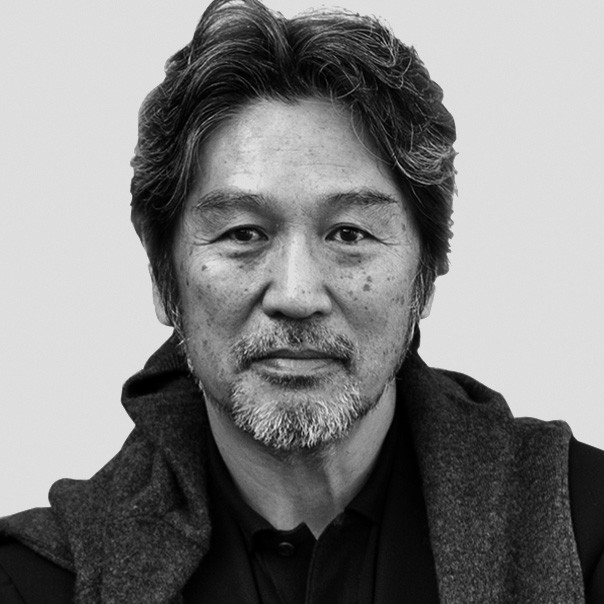
Katsuhito Nishikawa is a Japanese-German artist, sculptor, designer and architect.
After studying in Japan, he received degrees from the Academy of Fine Arts in Munich and the State Academy of Fine Arts in Düsseldorf. He currently lives and works as a visual artist and furniture designer at Insel Hombroich in Neuss, Germany. Katsuhito Nishikawa is also a visiting professor at the art universities of Hamburg (Germany) and Reims (France).
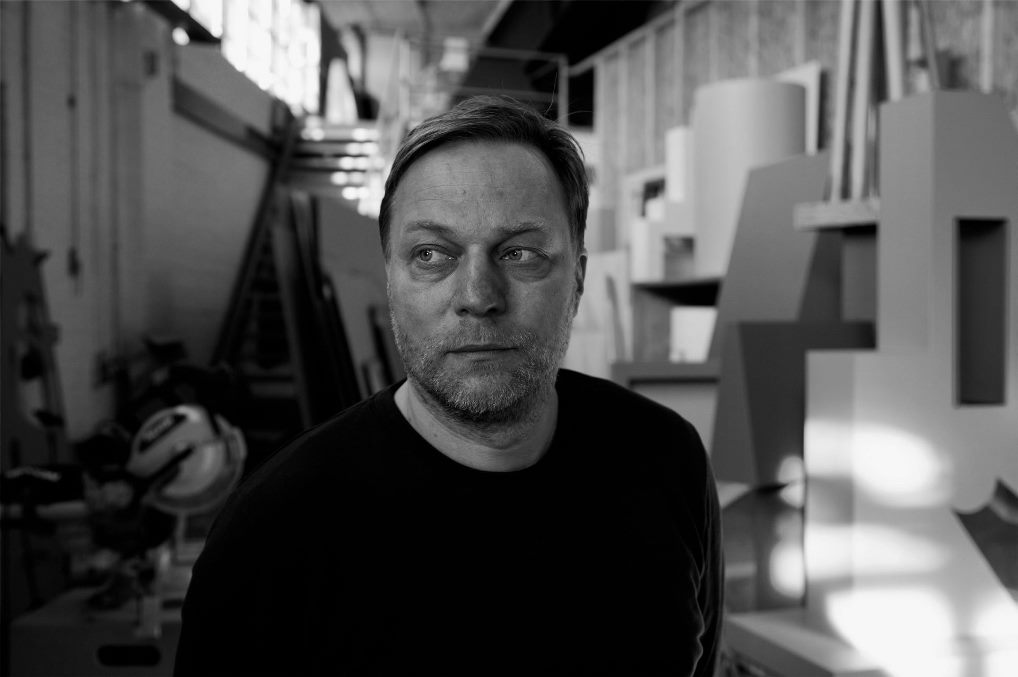
Thomas Scheibitz was a German painter and sculptor.
He is among the most important German artists and sculptors of his generation. Since the early 1990s Scheibitz has developed conceptual painting and sculpture that draws on historical references, and at the core of the Berlin artist's work is the search for a new relationship between figuration and abstraction.
